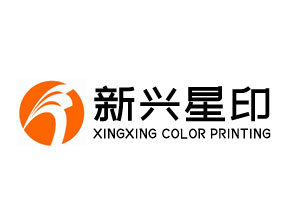Precautions for the production process of high temperature cooking bags
- Categories:Industry News
- Author:
- Origin:
- Time of issue:2022-05-17
(Summary description)1. The thickness of the base metal is balanced, the corona treatment effect is good, and the thermal shrinkage rate is high Commonly used high temperature cooking bag substrates are PET, NY, Al, RCPP, etc. The corona treatment effect of these substrates directly affects the composite strength of the high-temperature cooking bag; during the high-temperature cooking process, the substrate will shrink to varying degrees. The corona treatment of the material did not achieve the expected effect, the composite strength was low, and there was insufficient force between the composite bag layers to hinder the shrinkage of the substrate, resulting in serious delamination of the bag layer after high-temperature cooking. In general, the surface tension of PET and NY used in high temperature cooking bags should reach 50mN/m, and RCPP should reach 40~42mN/m. In addition, certain additives in the substrate, such as anti-blocking agents, anti-slip agents, and anti-static agents, accelerate their release to the surface at high temperatures, which can lead to decreased adhesion. Since the high temperature and high temperature cooking bag is basically in water during the sterilization process, when measuring the shrinkage rate of the substrate, the shrinkage rate of the substrate should be measured at 120 °C for 30 minutes. The shrinkage rate should be small and stable, especially for BOPA film, RCPP film and SCPP film. The moisture-proof shrinkage rate in the longitudinal and transverse directions is recommended not to exceed 1.5% before it can be called a cooking grade film. The balance thickness of each layer of the material should be uniform, the thickness deviation should not exceed 7%, and the physical and mechanical performance indicators should meet the requirements. To use aluminum foil products, in addition to its mechanical performance parameters, the surface of the aluminum must be dry, A and B and clean must meet the standards, that is, when checking distilled water, they must be wet, and the number of pores must be as small as possible. Well, the storage time before use cannot exceed three months. In order to improve the composite fastness, double-sided corona should be used for the middle composite BOPA, and the corona value should not be less than 50 dynes. 2. Compatibility of cooking inks, glues and substrates The production of composite packaging bags is a process of superimposing various properties of various materials, so substrates, inks, glues, etc. are required to have good compatibility and high temperature, humidity, and heat resistance. The degree of matching between them is very important. If the match is not good, the processed product may have poor appearance or delamination during cooking. According to the bonding theory, when the adhesive and the adherend have the same surface tension and the same polarity, the interfacial tension is the smallest and the bonding strength is the highest. Therefore, the surface condition of the ink and glue after curing into a film and the surface condition of the substrate may be different for different manufacturers' products. Whether groups on different surfaces can be attracted to form intermolecular forces or chemically react to form chemical bonds. It determines whether various surfaces have good adhesion. Therefore, the resin type of ink and glue should be fully considered when making steaming bags to avoid poor overall performance of steaming bags due to incompatibility of inks, glues and substrates. The ink or glue used for high temperature cooking bags is generally two-component polyurethane resin type. The heat resistance of ink or glue mainly depends on the heat resistance and moisture resistance of the polyurethane resin. The high temperature improves the reaction characteristics of the ink glue. If the temperature resistance and moisture resistance of the ink and glue are insufficient, hydrolysis will occur at high temperature, and the composite strength will be reduced. Judging from the characteristics of the polyurethane resin system, the amino and ester groups in the resin are extremely polar, and are susceptible to moisture erosion and hydrolysis under humid and hot conditions. The hydrogen bond between the polyurethane resin and the surface of the substrate is easily destroyed, which reduces the bonding strength, and the bonding layer even falls off. At present, the inks and glues for high-temperature cooking bags are modified with resins or additives to improve the adhesion and heat resistance of the inks and glues. Therefore, the quality of the modified resin used in the ink and adhesive determines the quality of the ink and adhesive. The RCPP and SCPP of the heat sealing layer are selected according to different cooking temperatures. RCPP or SCPP are usually used for heat sealing materials above 121℃, and the thickness must be greater than 60um. Imported products are generally recommended. The imported RCPP inner layer contains
Precautions for the production process of high temperature cooking bags
(Summary description)1. The thickness of the base metal is balanced, the corona treatment effect is good, and the thermal shrinkage rate is high
Commonly used high temperature cooking bag substrates are PET, NY, Al, RCPP, etc. The corona treatment effect of these substrates directly affects the composite strength of the high-temperature cooking bag; during the high-temperature cooking process, the substrate will shrink to varying degrees. The corona treatment of the material did not achieve the expected effect, the composite strength was low, and there was insufficient force between the composite bag layers to hinder the shrinkage of the substrate, resulting in serious delamination of the bag layer after high-temperature cooking. In general, the surface tension of PET and NY used in high temperature cooking bags should reach 50mN/m, and RCPP should reach 40~42mN/m. In addition, certain additives in the substrate, such as anti-blocking agents, anti-slip agents, and anti-static agents, accelerate their release to the surface at high temperatures, which can lead to decreased adhesion. Since the high temperature and high temperature cooking bag is basically in water during the sterilization process, when measuring the shrinkage rate of the substrate, the shrinkage rate of the substrate should be measured at 120 °C for 30 minutes. The shrinkage rate should be small and stable, especially for BOPA film, RCPP film and SCPP film. The moisture-proof shrinkage rate in the longitudinal and transverse directions is recommended not to exceed 1.5% before it can be called a cooking grade film.
The balance thickness of each layer of the material should be uniform, the thickness deviation should not exceed 7%, and the physical and mechanical performance indicators should meet the requirements.
To use aluminum foil products, in addition to its mechanical performance parameters, the surface of the aluminum must be dry, A and B and clean must meet the standards, that is, when checking distilled water, they must be wet, and the number of pores must be as small as possible. Well, the storage time before use cannot exceed three months. In order to improve the composite fastness, double-sided corona should be used for the middle composite BOPA, and the corona value should not be less than 50 dynes.
2. Compatibility of cooking inks, glues and substrates
The production of composite packaging bags is a process of superimposing various properties of various materials, so substrates, inks, glues, etc. are required to have good compatibility and high temperature, humidity, and heat resistance. The degree of matching between them is very important. If the match is not good, the processed product may have poor appearance or delamination during cooking. According to the bonding theory, when the adhesive and the adherend have the same surface tension and the same polarity, the interfacial tension is the smallest and the bonding strength is the highest. Therefore, the surface condition of the ink and glue after curing into a film and the surface condition of the substrate may be different for different manufacturers' products. Whether groups on different surfaces can be attracted to form intermolecular forces or chemically react to form chemical bonds. It determines whether various surfaces have good adhesion. Therefore, the resin type of ink and glue should be fully considered when making steaming bags to avoid poor overall performance of steaming bags due to incompatibility of inks, glues and substrates.
The ink or glue used for high temperature cooking bags is generally two-component polyurethane resin type. The heat resistance of ink or glue mainly depends on the heat resistance and moisture resistance of the polyurethane resin. The high temperature improves the reaction characteristics of the ink glue. If the temperature resistance and moisture resistance of the ink and glue are insufficient, hydrolysis will occur at high temperature, and the composite strength will be reduced. Judging from the characteristics of the polyurethane resin system, the amino and ester groups in the resin are extremely polar, and are susceptible to moisture erosion and hydrolysis under humid and hot conditions. The hydrogen bond between the polyurethane resin and the surface of the substrate is easily destroyed, which reduces the bonding strength, and the bonding layer even falls off. At present, the inks and glues for high-temperature cooking bags are modified with resins or additives to improve the adhesion and heat resistance of the inks and glues. Therefore, the quality of the modified resin used in the ink and adhesive determines the quality of the ink and adhesive. The RCPP and SCPP of the heat sealing layer are selected according to different cooking temperatures.
RCPP or SCPP are usually used for heat sealing materials above 121℃, and the thickness must be greater than 60um. Imported products are generally recommended. The imported RCPP inner layer contains
- Categories:Industry News
- Time of issue:2022-05-17
- Views:
Scan the QR code to read on your phone
News
-

The first public announcement of the environmental impact of the full-automatic printing and packaging materials cleaner production line project
2022-06-14According to the requirements of the law of the people's Republic of China on environmental impact assessment and the measures for public participation in environmental impact assessment... Details - [Guangdong Xingyin Invitation] The 14th Inner Mongolia Dairy Expo 03-17
- Participated in the 27th China International Packaging Industry Exhibition (Sino-Pack2021) 03-02
- [Guangdong News] Guangdong Xingyin Packaging Materials Co., Ltd. "Guangzhou Condiment International Exhibition 12-07
- Participated in the 2020 China Candy and Snacks Exhibition, China Ice Cream Cold Food Exhibition and Global High-end Food Exhibition 09-10
Contact Info
Address: Xilong Industrial Zone, Chaoshan Road, Shantou, Guangdong, China
Fax:+86-754-88667444
E-mail:stxxcy@vip.163.com

WeChat Official Account
Copyright © 2022 Guangdong Xingyin Packaging Materials Co., Ltd. 粤ICP备18069563号 Powered by:www.300.cn

 中文
中文
 English
English

 Language
Language SERACH
SERACH


